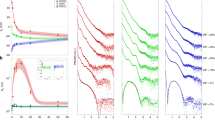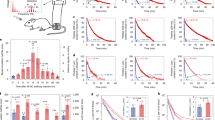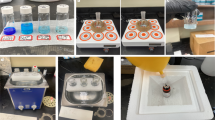Abstract
We report a study aiming to characterize the interaction of blood and blood components with lipoplexes under conditions relevant to in vivo intravenous transfection. In this study we focus on the interaction of lipoplexes with red blood cells (RBC). It was found that no significant hemolysis occurred during several hours’ incubation using lipoplex compositions and lipoplex/red blood cell ratios in the range commonly used for in vivo transfection. However, the interaction of RBC with lipoplexes resulted in massive agglutination, which occurs irrespective of the type of cationic lipid or helper lipid. Agglutination was also induced by polyplexes (such as dendrimer/DNA complexes) and lipoplexes in the presence of spermidine or protamine sulfate (the latter induced hemagglutination by itself). DSPE-PEG2000 inserted into the lipoplexes inhibits hemagglutination somewhat. In order to understand the effect of serum on the agglutination better, plasma was separated into its high molecular weight components (HMWC, >14 kDa) and its low molecular weight components (LMWC, ≤14 kDa). These fractions were characterized for their level of proteins, primary amino groups, osmotic pressure, and electrical conductivity, and compared with saline (0.15 M NaCl). It was found that both LMWC and HMWC inhibit agglutination by themselves, although whole serum demonstrates better hemagglutination inhibition than each fraction separately. The inhibitory effect of the serum (or plasma) is explained by its effect on the electrostatics of the lipoplexes, reducing their positive charge, as was demonstrated using fluorescein-phosphatidylethanolamine-labeled lipoplexes. The effect of LMWC was related to ionic strength and was equal to the effect of 0.15 M NaCl. The level of agglutination was reduced with increasing lipoplex DNA−/cationic lipid+ (DNA−/L+) ratio. However, at the low DNA−/L+ ratio needed to achieve significant in vivo transfection after i.v. administration, massive agglutination occurred. These data suggest that i.v. administration of lipoplexes and polyplexes may lead to RBC agglutination, and the agglutinates formed may explain the localization of lipoplexes and expression of their transgenes in the lungs.
This is a preview of subscription content, access via your institution
Access options
Subscribe to this journal
Receive 12 print issues and online access
$259.00 per year
only $21.58 per issue
Buy this article
- Purchase on Springer Link
- Instant access to full article PDF
Prices may be subject to local taxes which are calculated during checkout








Similar content being viewed by others
References
Felgner PL et al. Nomenclature for synthetic gene delivery systems Hum Gene Ther 1997 8: 511–512
Caplen NJ et al. Liposome-mediated CFTR gene transfer to the nasal epithelium of patients with cystic fibrosis Nat Med 1995 1: 39–46
Nabel GJ et al. Immune response in human melanoma after transfer of an allogeneic class I major histocompatibility complex gene with DNA-liposome complexes Proc Natl Acad Sci USA 1996 93: 15388–15393
Loeffler JP, Behr JP . Gene transfer into primary and established mammalian cell lines with lipopolyamine-coated DNA Meth Enzymol 1993 217: 599–618
Felgner JH et al. Enhanced gene delivery and mechanism studies with a novel series of cationic lipid formulations J Biol Chem 1994 269: 2550–2561
Schofield JP, Caskey CT . Non-viral approaches to gene therapy Br Med Bull 1995 51: 56–71
Zuidam NJ, Hirsch-Lerner D, Margulies S, Barenholz Y . Lamellarity of cationic liposomes and mode of preparation of lipoplexes affect transfection efficiency Biochim Biophys Acta 1999 1419: 207–220
Kerner M et al. Interplay in lipoplexes between type of pDNA promoter and lipid composition determines transfection efficiency of human growth hormone in NIH3T3 cells in culture Biochim Biophys Acta 2001 55783: 1–9
Loisel S, Floch V, Le Gall C, Ferec C . Factors influencing the efficiency of lipoplexes mediated gene transfer in lungs after intravenous administration J Liposome Res 2001 11: 127–138
Simberg D, Hirsh-Lerner D, Nissim R, Barenholz Y . Comparison of different commercially-available cationic lipid-based transfection kits J Liposome Res 2000 10: 1–13
Zhou XH, Klibanov AL, Huang L . Lipophilic polylysines mediate efficient DNA transfection in mammalian cells Biochim Biophys Acta 1991 1065: 8–14
Lewis JG et al. A serum-resistant cytofectin for cellular delivery of antisense oligodeoxynucleotides and plasmid DNA Proc Natl Acad Sci USA 1996 93: 3176–3181
Vitiello L et al. Condensation of plasmid DNA with polylysine improves liposome-mediated gene transfer into established and primary muscle cells Gene Therapy 1996 3: 396–404
Escriou V et al. Cationic lipid-mediated gene transfer: effect of serum on cellular uptake and intracellular fate of lipopolyamine/DNA complexes Biochim Biophys Acta 1998 1368: 276–288
Mizuarai S et al. Protamine-modified DDAB lipid vesicles promote gene transfer in the presence of serum J Biochem (Tokyo) 2001 29: 125–132
Hong K, Zheng W, Baker A, Papahadjopoulos D . Stabilization of cationic liposome-plasmid DNA complexes by polyamines and poly(ethylene glycol)-phospholipid conjugate for efficient in vivo gene delivery FEBS Lett 1997 400: 233–237
Liu Y et al. Factors influencing the efficiency of cationic liposome-mediated intravenous gene delivery Nat Biotechnol 1997 15: 167–173
Sternberg B, Hong K, Zheng W, Papahadjopoulos D . Ultrastructural characterization of cationic liposome-DNA complexes showing enhanced stability in serum and high transfection activity in vivo Biochim Biophys Acta 1998 1375: 23–35
Sorgi FL, Bhattacharya S, Huang L . Protamine sulfate enhances lipid-mediated gene transfer Gene Therapy 1997 4: 961–968
Li S, Huang L . In vivo gene transfer via intravenous administration of cationic lipid-protamine-DNA (LPD) complexes Gene Therapy 1997 4: 891–900
Senior JH, Trimble KR, Maskiewicz R . Interaction of positively-charged liposomes with blood: implications for their application in vivo Biochim Biophys Acta 1991 1070: 173–179
Zelphati O, Uyechi LS, Barron LG, Szoka FC Jr . Effect of serum components on the physico-chemical properties of cationic lipid/oligonucleotide complexes and on their interactions with cells Biochim Biophys Acta 1998 1390: 119–133
Winterhalter M, Lasic DD . Liposome stability and formation: experimental parameters and theories on the size distribution Chem Phys Lipids 1993 64: 35–43
Senior J, Crawley JC, Gregoriadis G . Tissue distribution of liposomes exhibiting long half-lives in the circulation after intravenous injection Biochim Biophys Acta 1985 839: 1–8
Gregoriadis G, Neeruniun DE . Control of the rate of hepatic uptake and catabolism of liposome-entrapped proteins injected into rats. Possible therapeutic applications Eur J Biochem 1974 47: 179–185
Aoki H, Sun C, Fuji K, Miyajima K . Disposition kinetics of liposomes modified with synthetic aminoglycolipids in rats Int J Pharm 1995 115: 183–192
Zhu N, Liggitt D, Liu Y, Debs R . System gene expression after intravenous DNA delivery in adult mice Science 1993 261: 209–211
Song YK, Liu D . Free liposomes enhance the transfection activity of DNA/lipid complexes in vivo by intravenous administration Biochim Biophys Acta 1998 1372: 141–150
Dacie JV, Lewis SM, Chipping P, Loyd E . The human red-cell blood groups and the identification of the blood-group antigens and antibodies Dacie JV, Lewis SM (eds); Practical Haematology Churchill Livingstone 1984 pp 337–357
Haugland RP . Probes useful at near-natural pH Spence MTZ (eds); Molecular Probes’ Handbook of Fluorescent Probes and Research Chemicals Molecular Probes 1996 pp 552–555
Zuidam NJ, Barenholz Y . Electrostatic parameters of cationic liposomes commonly used for gene delivery as determined by 4-heptadecyl-7-hydroxycoumarin Biochim Biophys Acta 1997 1329: 211–222
Zuidam NJ, Barenholz Y . Electrostatic and structural properties of complexes involving plasmid DNA and cationic lipids commonly used for gene delivery Biochim Biophys Acta 1998 1368: 115–128
Kedar E et al. Delivery of cytokines by liposomes: hematopoietic and immunomodulatory activity of interleukin-2 encapsulated in conventional liposomes and in long-circulating liposomes J Immunother 2000 23: 131–145
Meidan VM et al. Interaction of oligonucleotides with cationic lipids: the relationship between electrostatics, hydration and state of aggregation Biochim Biophys Acta 2000 1464: 251–261
Van Damme MP, Tiglias J, Nemat N, Preston BN . Determination of the charge content at the surface of cells using a colloid titration technique Anal Biochem 1994 223: 62–70
Lasic DD . CRC Press 1997
Sakurai F et al. Interaction between DNA-cationic liposome complexes and erythrocytes is an important factor in systemic gene transfer via the intravenous route in mice: the role of the neutral helper lipid Gene Therapy 2001 8: 677–686
Huebner S, Politsch E, Vierl U, Cevc G . EDTA-induced self-assembly of cationic lipid-DNA multilayers near a monolayer-covered air-water interface Biochim Biophys Acta 1999 1421: 1–4
Shangguan T et al. A novel N-acyl phosphatidylethanolamine-containing delivery vehicle for spermine-condensed plasmid DNA Gene Therapy 2000 7: 769–783
Ishiwata H et al. Characteristics and biodistribution of cationic liposomes and their DNA complexes J Control Release 2000 69: 139–148
Sakurai F et al. Effects of erythrocytes and serum proteins on lung accumulation of lipoplexes containing cholesterol or DOPE as a helper lipid in the single-pass rat lung perfusion system Eur J Pharm Biopharm 2001 52: 165–172
Barenholz Y, Amselem S . Liposome preparation and related technicques Gregoriadis G (eds); Liposome Technology CRC Press: Boca Raton 1993 pp 527–616
Levy S et al. Oligopyrimidine tract at the 5′ end of mammalian ribosomal protein mRNAs is required for their translational control Proc Natl Acad Sci USA 1991 88: 3319–3323
Even-Chen S, Barenholz Y . DOTAP cationic liposomes prefer relaxed over supercoiled plasmids Biochim Biophys Acta 2000 1509: 176–188
Haran G, Cohen R, Bar LK, Barenholz Y . Transmembrane ammonium sulfate gradients in liposomes produce efficient and stable entrapment of amphipathic weak bases Biochim Biophys Acta 1993 1151: 201–215
MacDonald RC et al. Small-volume extrusion apparatus for preparation of large, unilamellar vesicles Biochim Biophys Acta 1991 1061: 297–303
Barenholz Y et al. A simple method for the preparation of homogeneous phospholipid vesicles Biochemistry 1977 16: 2806–2810
Lowry OH, Rosebrough NJ, Farr AL, Randall RJ . Protein measurement with Folin phenol reagent J Biol Chem 1951 1933: 265–275
Peterson GL . Determination of total protein Meth Enzymol 1983 91: 95–119
Acknowledgements
This study was supported in part by grants from the Israel Science Foundation (ISF 8004/98) and the Canada–Israel Industrial Research and Development Foundation (CIIRDF).
Author information
Authors and Affiliations
Rights and permissions
About this article
Cite this article
Eliyahu, H., Servel, N., Domb, A. et al. Lipoplex-induced hemagglutination: potential involvement in intravenous gene delivery. Gene Ther 9, 850–858 (2002). https://doi.org/10.1038/sj.gt.3301705
Received:
Accepted:
Published:
Issue Date:
DOI: https://doi.org/10.1038/sj.gt.3301705
Keywords
This article is cited by
-
Delivery of nucleic acids using nanomaterials
Molecular Biomedicine (2023)
-
Polyprenol-Based Lipofecting Agents for In Vivo Delivery of Therapeutic DNA to Treat Hypertensive Rats
Biochemical Genetics (2021)
-
Systemic delivery of miR-126 by miRNA-loaded Bubble liposomes for the treatment of hindlimb ischemia
Scientific Reports (2014)
-
Polyethylenimine-complexed Plasmid Particles Targeting Focal Adhesion Kinase Function as Melanoma Tumor Therapeutics
Molecular Therapy (2007)
-
A novel siRNA-lipoplex technology for RNA interference in the mouse vascular endothelium
Gene Therapy (2006)



